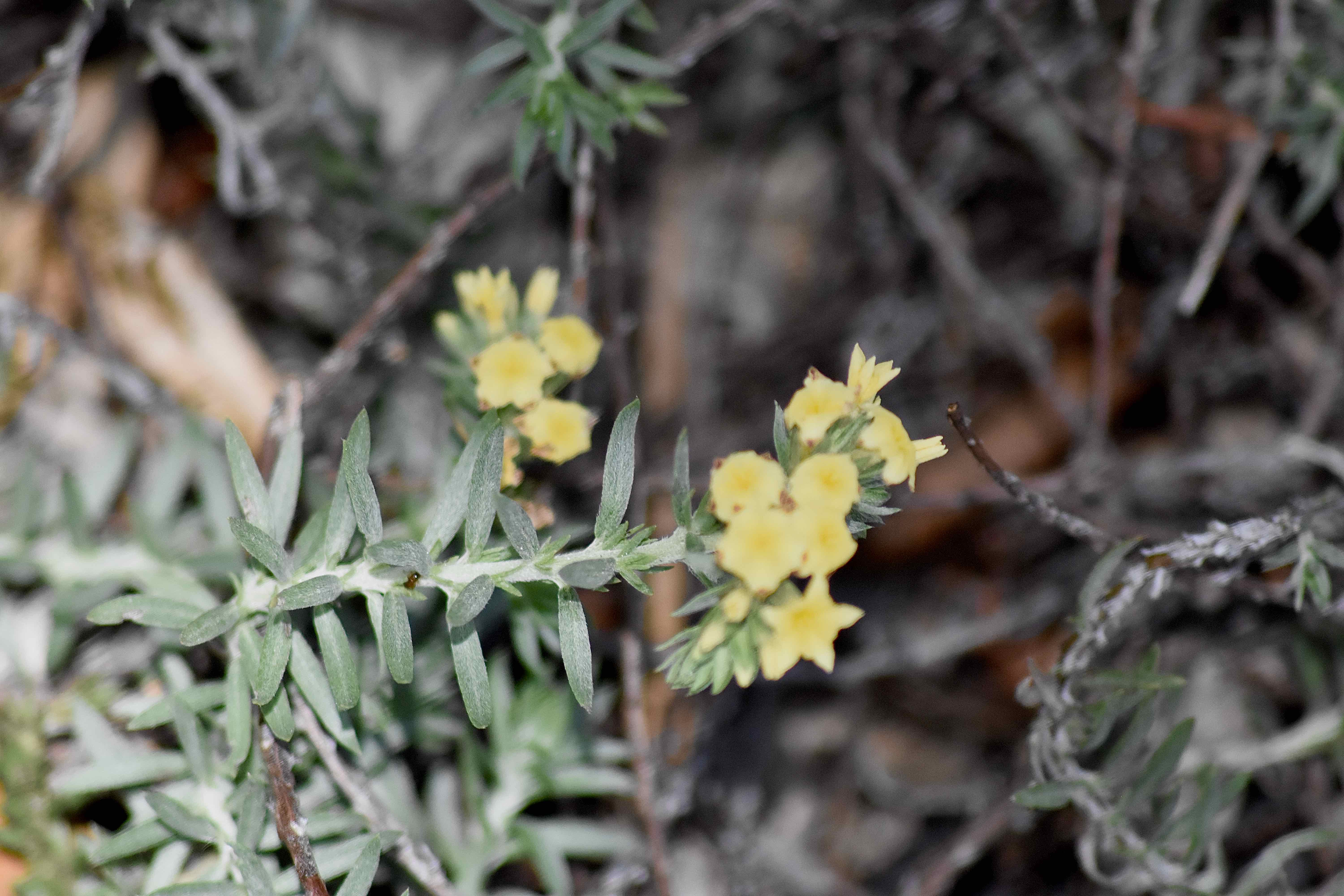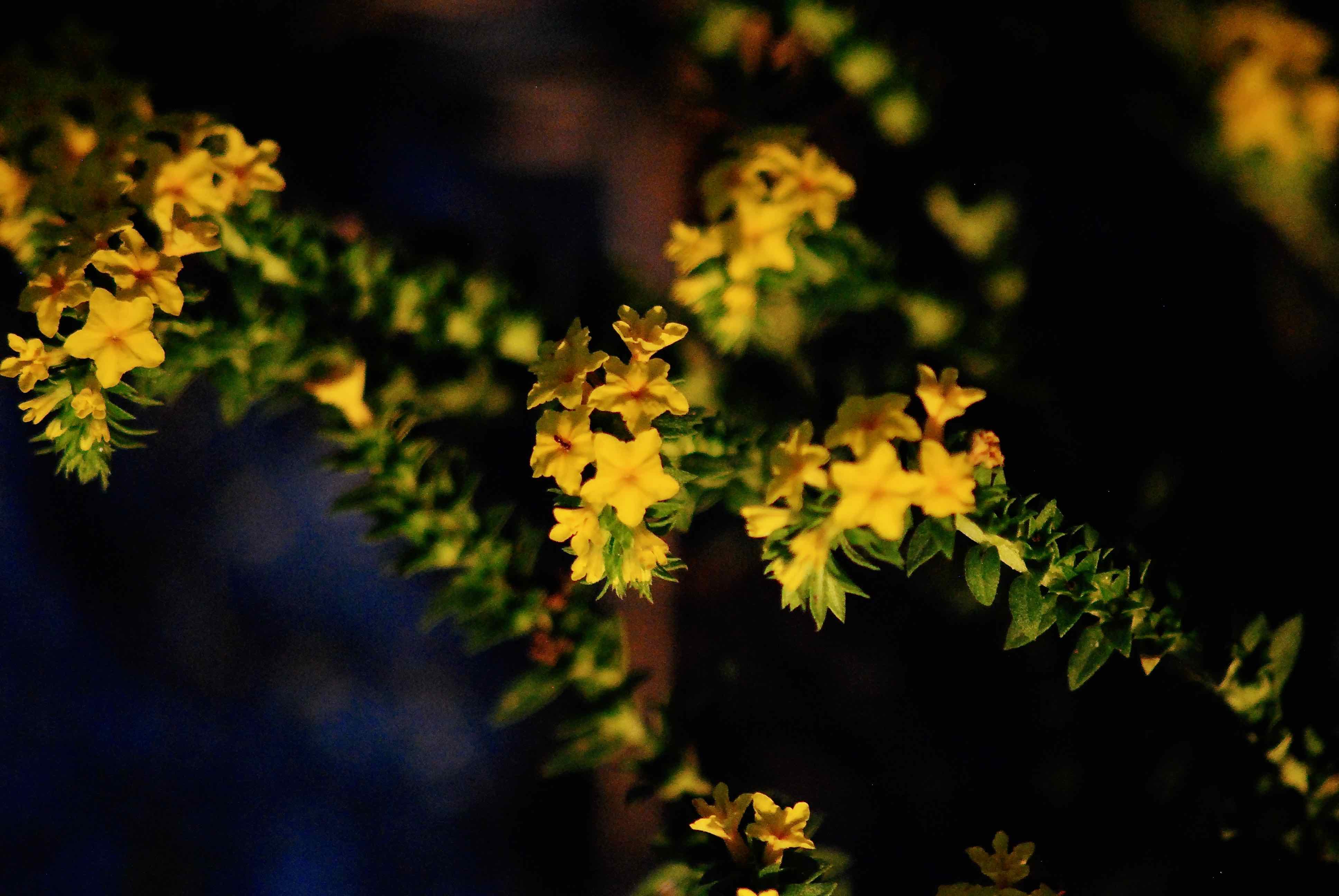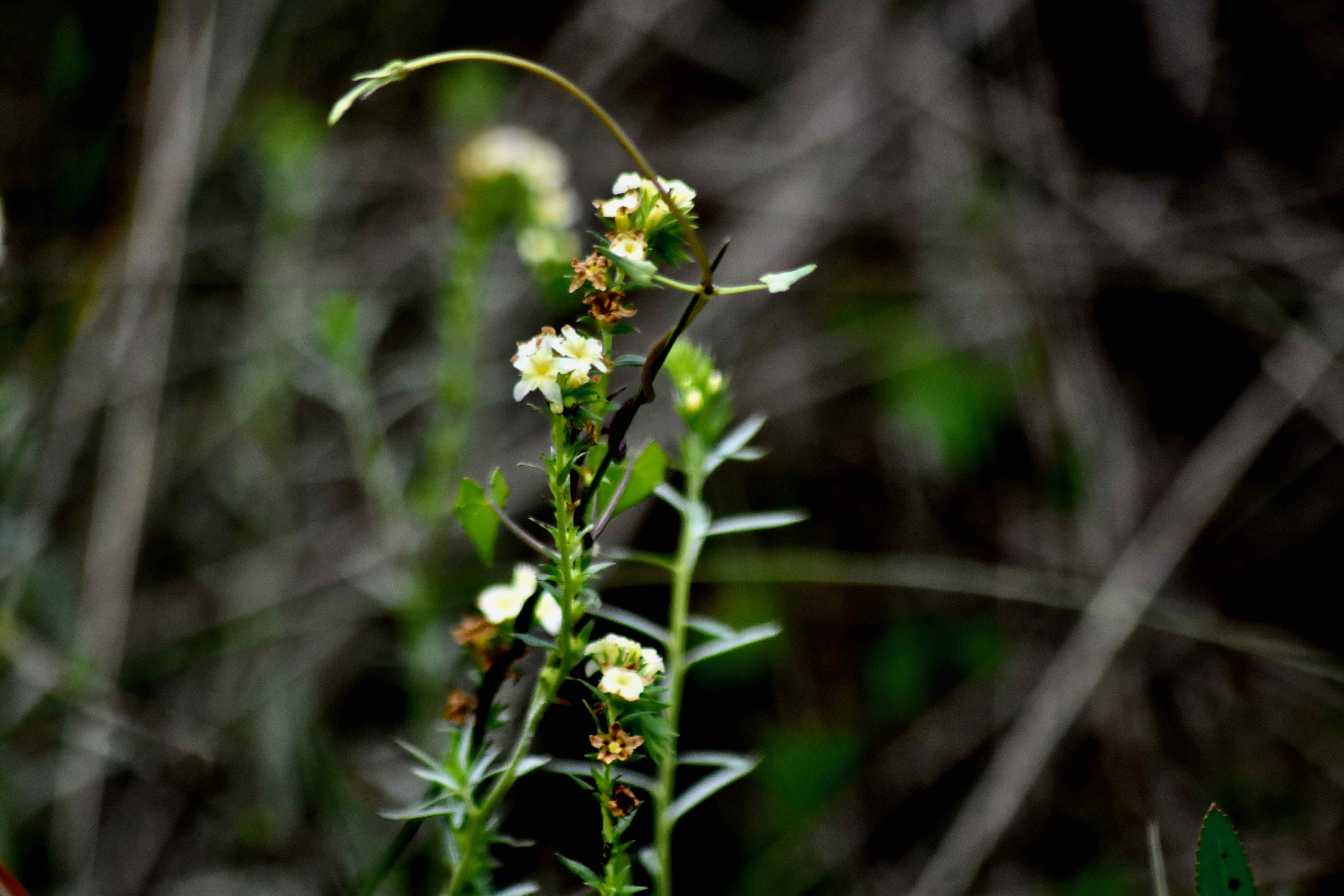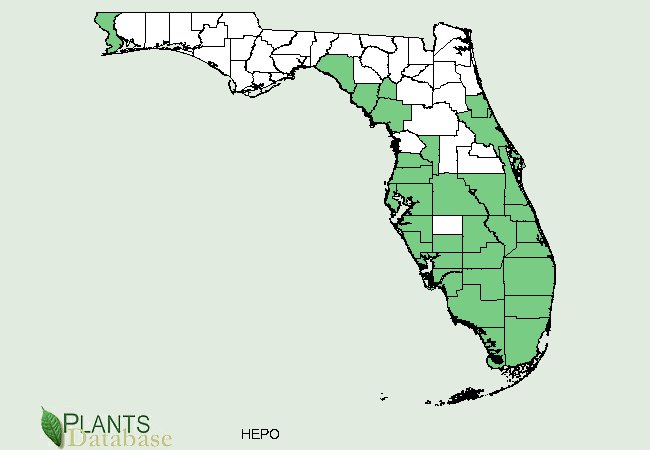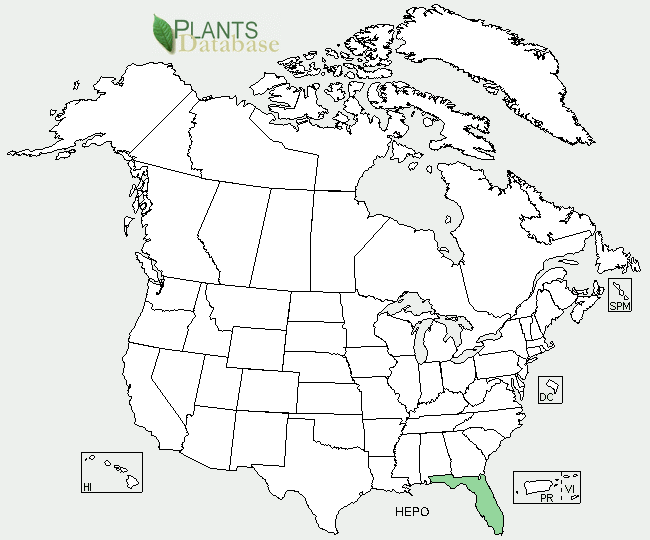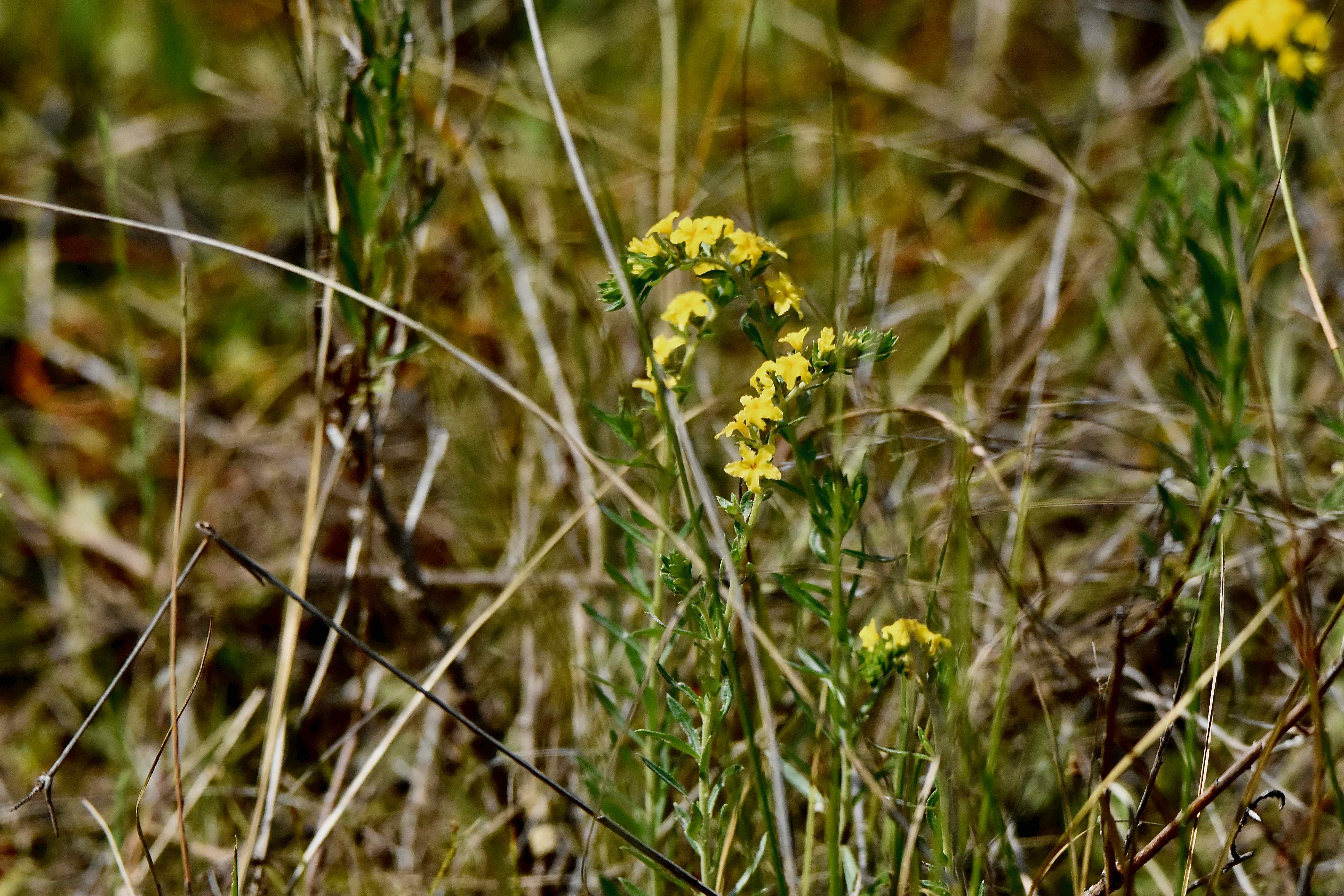
Pineland heliotrope, photographed along the Apoxee Trail, West Palm Beach, Palm Beach County, in April 2018.
The odd thing about pineland heliotrope, Heliotropium polyphyllum, is its flowers. They vary greatly in color by geography. On Florida's West Coast, they tend toward white with a yellow throat. Along the Atlantic, they're bright yellow with a golden throat— like the one shown on this page in the middle below.
Pineland heliotrope, with some exceptions, is a small plant, but its flowers do pack a pretty good punch from a looks perspective. It's fairly common, found in most of Florida's Peninsula and the extreme northwestern corner of the Panhandle.
Florida is the only state in the union where it grows, but its range extends to the northern Bahamas. It's a ground creeper, it's height usually less than a foot but its spread can be much greater.
It has glossy, narrow leaves that grow alternately along the stem. The leaves are less than an inch long and the plant vaguely resembles herbal rosemary (best seen in the bottom left photo). Its scientific name, polyphyllum, means many leaves. (The name of its genus, Heliotropium, means to grow toward the sun.)
Pineland heliotrope is usually found near water — we've found it above canals and marshes — but it will adapt to drier conditions. Favorite habitats include pinelands (of course) prairies and coastal thickets, according to Delray Beach's Institute for Regional Conservation. The tops of the plant, where the flowers form, tends to arch over.
It is cold sensitive and will die back if temperatures dip below freezing, but thanks to a deep tap root, it will rebound once warmer weather returns. It flowers throughout the year, assuming temperatures are favorable.
There's also a white-flowered version of pineland heliotrope that can grow to about three feet (bottom, far right). Despite the obvious differences, they are both classified as the same species.
Pineland heliotrope can be used in landscapes as a ground cover, in edgings or in a butterfly garden. It's also used in restorations and natural settings. Warning: it does spread, and it can be a tough plant to remove — remember that deep tap root.
We've read references that the Seminoles used pineland heliotrope medicinally but found no specifics. We've also read that based on the chemical composition of other Heliotropium species, pineland heliotrope might be worth studying for potential drugs.
It is a member of the Boraginaceae, or Borage family, which includes forget-me-nots.
Click on photo for larger image
U.S. Department of Agriculture Distribution Maps

Links for Pineland Heliotrope

